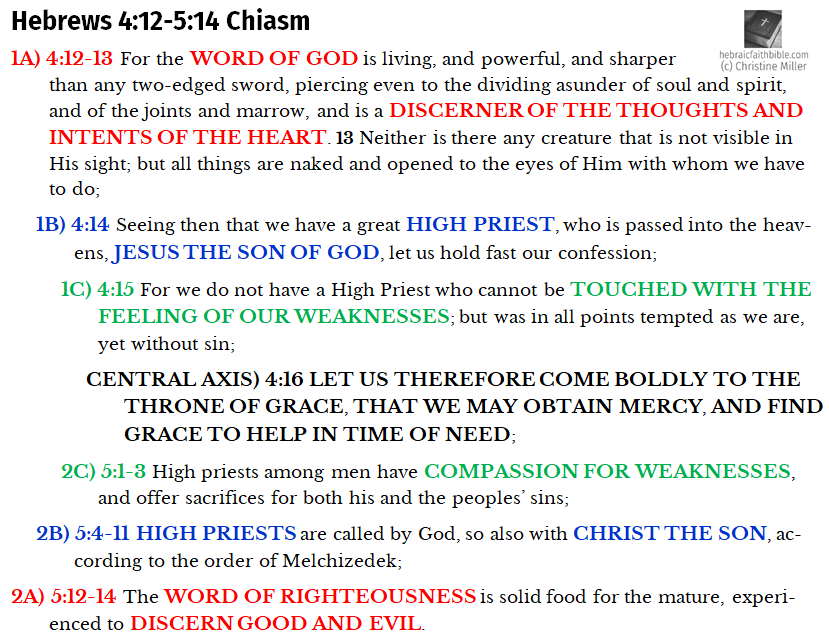Read Hebrews 5 here (text coming …) or at Bible Gateway.
Heb 4:12-5:14 Chiastic Structure (and Expanded Chiasm pdf):
This chapter reveals some startling truths, if we will Learn from the Narrative. One of them is that in all the ways human beings endure temptations to sin, beset with weaknesses, Yeshua was also tempted, yet in His case, He did not sin. But because He put on flesh, and lived just as we live, subject to parents, injustices, weaknesses and infirmities of the body, and the wrongs of others done to Him, He has compassion for what we ourselves suffer.
Compassion, according to Webster’s, is sympathetic consciousness of another’s distress together with a desire to alleviate it. He is God come in the flesh, great and glorious; yet His concern is not that we are tempted; His concern is compassion for the suffering of our temptation, and a desire to alleviate it.
Even though He was a Son, He also suffered as we suffer, and learned obedience by it. Because this is the case, we have another startling truth, the central axis of the structure:
Let us therefore come boldly to the throne of grace, that we may obtain mercy, and find grace to help in time of need. Heb 4:16
When we are tempted to sin, when we are beset with weaknesses, our first instinct is to hide from God, just like Adam hid from God in the Garden (Gen 3:8). Instead, we should come to God’s throne boldly, assuredly, confidently. His throne is, after all, the throne of grace, where He dispenses mercy, and gives us help to remain steadfast in our time of need.
If there are questions, these are good resources:
Chen, “Grace,” Strong’s H2580 Hebrew Root Word parable – Christine Miller
Numbers 7, The priesthood of Melchizedek – Christine Miller


















Leave a Reply